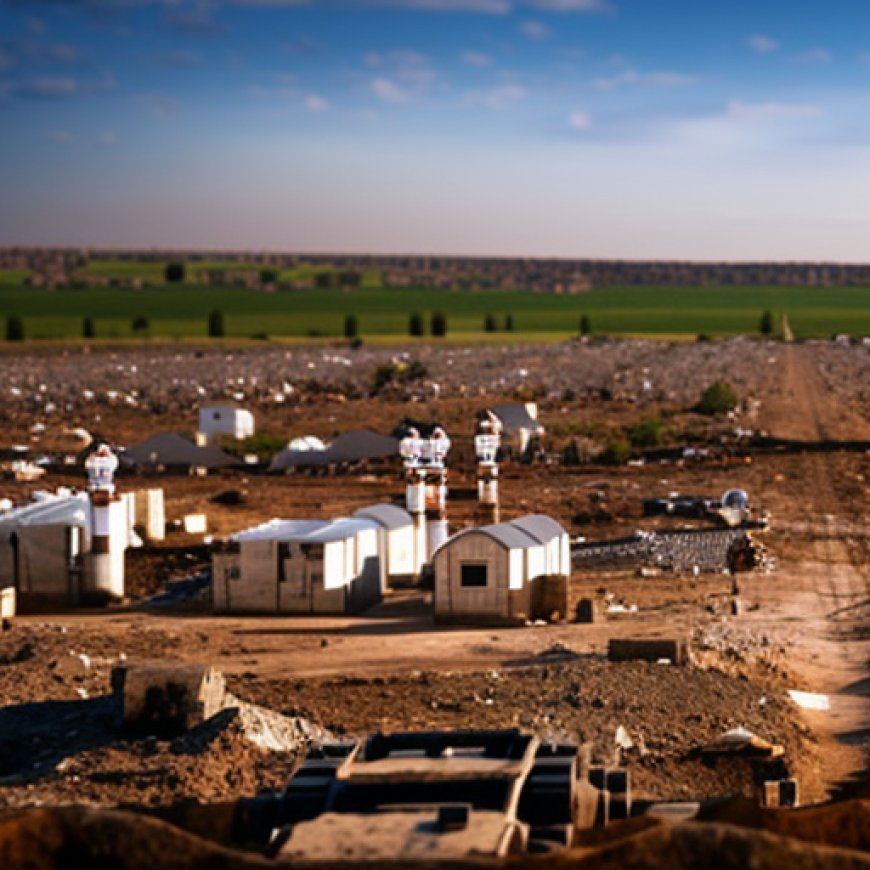In war-torn Ukraine: Israeli NGO IsraAID expands safe water access to thousands


Israel’s IsraAID to Provide Safe Water to 80,000 People in Ukraine
Some 80,000 people affected by the ongoing conflict in Ukraine are expected to receive access to safe water due to Israel’s leading humanitarian NGO, IsraAID, the organization announced last week.
Introduction
IsraAID, one of Israel’s leading NGOs, has been active in Ukraine since the beginning of the Russia-Ukraine war. The organization has been collaborating with local administrations to install advanced reverse osmosis water treatment stations and upgraded borehole pumping stations in an initiative expected to begin in October.
Sustainable Development Goals (SDGs)
- Goal 6: Clean Water and Sanitation
- Goal 11: Sustainable Cities and Communities
- Goal 13: Climate Action
Initiative Details
This initiative aims to reach the vulnerable communities in Kryvyi Rih Rayon in Dnipropetrovsk Oblast and various villages in Mykolaiv Oblast.
The new installations are expected to provide millions of liters of safe drinking water to communities whose infrastructure has been severely damaged or destroyed by the war and environmental disasters.
According to IsraAID, this expansion comes after the destruction of the Kakhovka Dam in June 2023, which led to significant flooding, ecological damage, and the loss of access to clean water for many residents in south-eastern Ukraine.
How will IsraAID’s initiative work?
IsraAID has procured large-scale reverse osmosis systems, each capable of producing 1,500 liters of water per hour, to be installed in public areas.
Additionally, 20 Aquabox systems, with a capacity of 250 liters per hour, will be set up in schools and medical centers lacking the infrastructure for larger systems.
Furthermore, given the frequent attacks on Ukraine’s energy infrastructure, resulting in limited power access, IsraAID said it is set to install 17 advanced borehole pumping stations with frequency converters. These converters help the equipment adapt to power fluctuations and save energy.
Importance of Safe Water in Ukraine
According to IsraAID Ukraine Country Director Alena Druzhynina, safe water is the “foundation” of many necessities in Ukraine.
“Water is necessary to keep schools open, to help people maintain their health and sanitation, to cook, and so much more. For nearly two years, we’ve seen how access to safe water has been critical for residents of Mykolaiv,” Druzhynina explained.
“Every day in Ukraine is a challenge, but Ukrainians are resilient. And every day we renew our commitment to work hand-in-hand with communities, adapt, and find creative solutions,” Druzhynina concluded.
SDGs, Targets, and Indicators
-
SDG 6: Clean Water and Sanitation
- Target 6.1: By 2030, achieve universal and equitable access to safe and affordable drinking water for all.
- Indicator 6.1.1: Proportion of population using safely managed drinking water services.
-
SDG 11: Sustainable Cities and Communities
- Target 11.5: By 2030, significantly reduce the number of deaths and the number of people affected and substantially decrease the direct economic losses relative to global gross domestic product caused by disasters, including water-related disasters, with a focus on protecting the poor and people in vulnerable situations.
- Indicator 11.5.1: Number of deaths, missing persons, and directly affected persons attributed to disasters per 100,000 population.
Analysis
The issues highlighted in the article are related to the ongoing conflict in Ukraine and the lack of access to safe water due to infrastructure damage and environmental disasters. Based on this information, the following SDGs, targets, and indicators can be identified:
SDG 6: Clean Water and Sanitation
The initiative by IsraAID aims to provide safe drinking water to communities in Ukraine that have lost access to clean water due to the war and environmental disasters. This aligns with SDG 6, which focuses on ensuring access to clean water and sanitation for all.
- Target 6.1: By 2030, achieve universal and equitable access to safe and affordable drinking water for all.
- Indicator 6.1.1: Proportion of population using safely managed drinking water services.
SDG 11: Sustainable Cities and Communities
The infrastructure damage and environmental disasters caused by the conflict in Ukraine have significantly affected communities. IsraAID’s initiative aims to address this issue by providing safe water to vulnerable communities. This aligns with SDG 11, which focuses on creating sustainable cities and communities.
- Target 11.5: By 2030, significantly reduce the number of deaths and the number of people affected and substantially decrease the direct economic losses relative to global gross domestic product caused by disasters, including water-related disasters, with a focus on protecting the poor and people in vulnerable situations.
- Indicator 11.5.1: Number of deaths, missing persons, and directly affected persons attributed to disasters per 100,000 population.
Table: SDGs, Targets, and Indicators
| SDGs | Targets | Indicators |
|---|---|---|
| SDG 6: Clean Water and Sanitation | Target 6.1: By 2030, achieve universal and equitable access to safe and affordable drinking water for all. | Indicator 6.1.1: Proportion of population using safely managed drinking water services. |
| SDG 11: Sustainable Cities and Communities | Target 11.5: By 2030, significantly reduce the number of deaths and the number of people affected and substantially decrease the direct economic losses relative to global gross domestic product caused by disasters, including water-related disasters, with a focus on protecting the poor and people in vulnerable situations. | Indicator 11.5.1: Number of deaths, missing persons, and directly affected persons attributed to disasters per 100,000 population. |
Source: jpost.com








